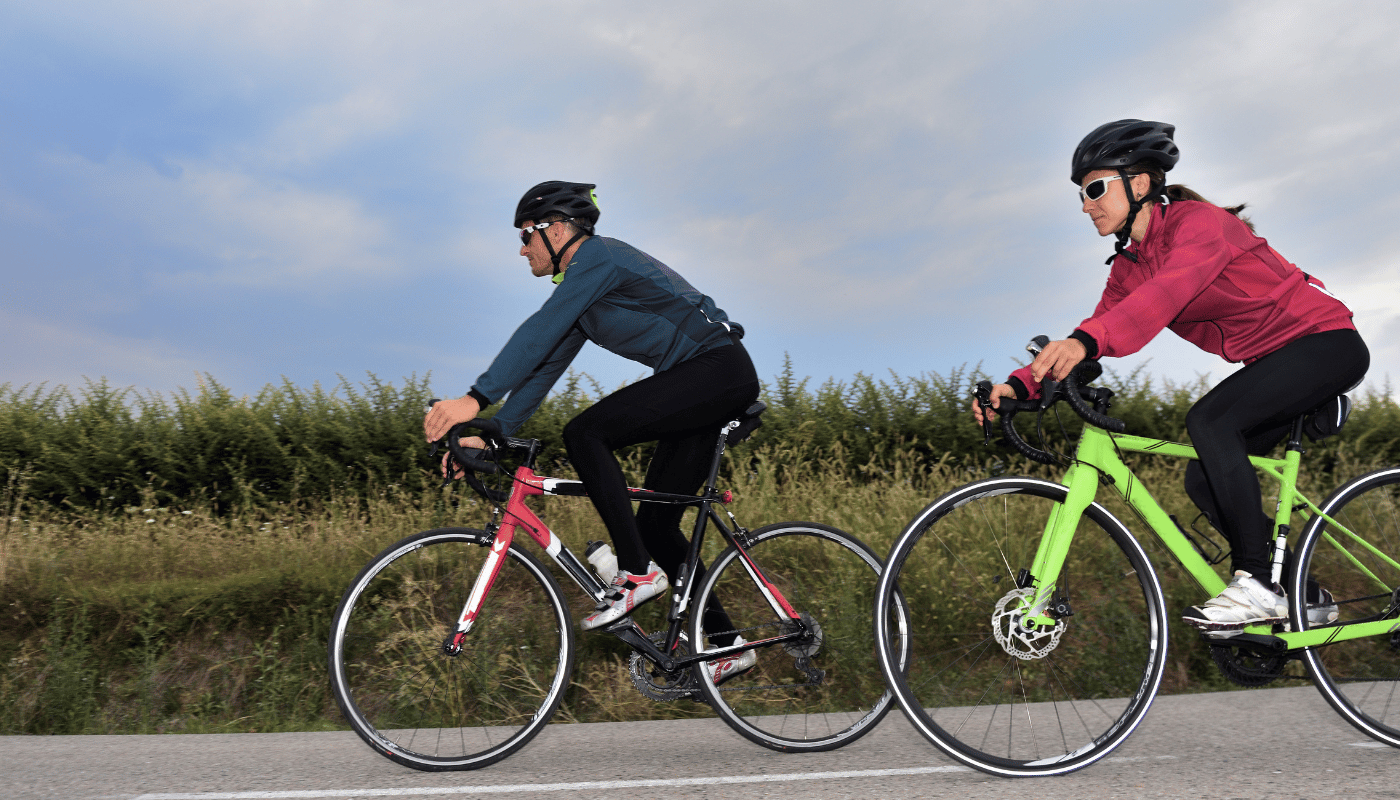Cycling is widely recognized as a low-impact exercise that offers numerous benefits for joint health, particularly for the knees. Unlike high-impact activities such as running, cycling places minimal stress on the knee joints, making it an ideal choice for individuals seeking to enhance mobility or recover from injuries. It allows for smooth, repetitive motion that strengthens surrounding muscles without overloading the joints.
Within this broader context, an emerging trend in fitness has caught attention: backward cycling. This unconventional approach to cycling involves pedalling in reverse, activating different muscle groups and potentially offering unique benefits. Backward cycling engages the hamstrings and glutes more intensively than forward cycling, promoting balanced muscle development around the knees.
For individuals with knee concerns, safe and effective exercises are essential. Forward cycling has long been recommended to enhance joint flexibility, improve circulation within the knee, and reduce stiffness over time. However, many are now exploring whether is cycling backwards good for knees, as it provides an alternative way to strengthen muscles and alleviate stress on specific areas of the joint.
Studies have shown that incorporating diverse movements into a fitness routine can help reduce the risk of overuse injuries. Backward cycling, though less commonly practised, might support knee health by introducing new motion patterns and activating muscles often underutilized in forward cycling. This variation could be particularly beneficial for people recovering from knee injuries or seeking low-impact exercise options.
Benefits of Forward Cycling for Knee Health
Cycling has long been celebrated for its ability to promote joint health, particularly for the knees. Forward cycling, the traditional method, offers numerous benefits that can improve overall knee function, making it a go-to exercise for people of all ages and fitness levels. By combining smooth, repetitive motions with controlled resistance, forward cycling strengthens key muscle groups while reducing joint stress.
One of the primary advantages of forward cycling is its ability to strengthen the quadriceps and hamstrings, which play a crucial role in stabilizing the knee joint. Strong muscles around the knee reduce the likelihood of injury and enhance overall mobility. Furthermore, forward cycling helps increase synovial fluid circulation within the knee joint, improving lubrication and reducing stiffness, particularly in individuals with arthritis or joint pain.
Key Benefits of Forward Cycling
- Builds strength in the quadriceps, hamstrings, and calves, stabilising the knee.
- Improves joint lubrication and reduces stiffness.
- Enhances flexibility and range of motion in the knee joint.
- It supports weight management and reduces pressure on the knees.
After considering these benefits, it’s clear that forward cycling offers an accessible and effective way to maintain joint health. The smooth, low-impact motion minimizes wear and tear, making it ideal for individuals recovering from injuries or managing chronic joint conditions.
In addition to its physical advantages, forward cycling supports cardiovascular health and weight management. By maintaining a healthy weight, individuals can significantly reduce the load placed on their knees during daily activities. This dual benefit makes forward cycling a practical and sustainable option for long-term health.
Incorporating forward cycling into a fitness routine is simple and highly adaptable. Whether riding a stationary bike indoors or enjoying a scenic outdoor route, forward cycling remains one of the most efficient and knee-friendly exercises. Its effectiveness in strengthening muscles, improving flexibility, and promoting overall joint health solidifies its position as a top choice for people looking to protect and enhance their knee function.
Exploring Backward Cycling: Mechanics and Potential Advantages
Backward cycling, an unconventional and lesser-known exercise, has piqued the interest of fitness enthusiasts and physical therapists. Unlike forward cycling, backward pedalling reverses the legs’ motion, which alters the muscle groups activated and creates a unique dynamic for the knees. Understanding the mechanics and potential benefits of backward cycling can help individuals decide whether to incorporate it into their fitness routines.
When pedalling backwards, the primary muscles engaged are the hamstrings and glutes, in contrast to the quadriceps-dominant movement of forward cycling. This change in muscle activation can provide a more balanced workout, targeting areas often underutilized in traditional cycling. By strengthening the hamstrings and glutes, backward cycling helps stabilize the knee joint, potentially alleviating pressure and reducing the risk of injury.
For knee issues or recovering from injuries, backward cycling offers a low-impact alternative that promotes joint health while avoiding excessive strain. Research on this exercise is still emerging, but anecdotal evidence suggests that incorporating backward cycling into a fitness routine may improve muscle coordination, enhance flexibility, and support rehabilitation.
Many people wonder is cycling backwards good for knees, especially when compared to traditional forward cycling. Backward pedalling introduces new movement patterns that encourage better neuromuscular coordination and balance. This can be particularly beneficial for individuals looking to enhance joint stability or diversify their workout routines to prevent overuse injuries.
While backward cycling may seem unconventional, it is becoming increasingly popular in physical therapy settings and specialized training programs. Experts recommend starting with short sessions with a low resistance to adapt to the unique motion. Increasing intensity can help avoid unnecessary strain while reaping the benefits of this innovative exercise.
Backward cycling presents an intriguing alternative to forward cycling, offering unique advantages for knee health and overall fitness. By targeting different muscle groups and introducing new movement dynamics, it has the potential to complement traditional exercises and improve joint stability. However, as with any exercise, it is essential to consult a fitness professional or physical therapist to ensure proper form and suitability.
Comparative Analysis: Forward vs. Backward Cycling
Cycling offers physical fitness and joint health advantages, whether forward or backwards. However, the mechanics and effects of these two approaches differ significantly. By understanding their distinctions, individuals can decide which method best suits their needs.
Forward cycling is the traditional approach that emphasises quadriceps and calves. It supports knee joint lubrication and flexibility while providing cardiovascular benefits. On the other hand, backward cycling shifts the focus to hamstrings and glutes, engaging muscles often overlooked in standard cycling routines. This redistribution of muscle engagement can promote balanced strength around the knee joint.
Forward vs. Backward Cycling
| Aspect | Forward Cycling | Backward Cycling |
| Muscle Groups Targeted | Quadriceps, calves | Hamstrings, glutes |
| Joint Impact | Low stress on knees | Different stress distribution |
| Cardiovascular Benefits | Strong improvement | Comparable benefits |
| Coordination Requirement | Moderate | High due to unfamiliar movement |
While forward cycling is better understood and extensively researched, backward cycling introduces a dynamic element that can benefit joint health in unique ways. The low-impact nature of both approaches makes them suitable for individuals with knee concerns, though backward cycling requires more coordination and balance due to its unfamiliar movement pattern.
In addition to muscle activation, the choice between forward and backward cycling can depend on individual goals. For instance, individuals recovering from knee injuries may benefit from the varied muscle engagement offered by backward cycling. Conversely, forward cycling remains a trusted option for building endurance and improving cardiovascular health.
Risks and Precautions of Backward Cycling
While backward cycling offers unique benefits for knee health, it also comes with certain risks and considerations. As with any exercise, understanding these risks and following proper precautions is essential to ensure safety and effectiveness.
One potential risk of backward cycling is improper form. The unfamiliar movement can lead to excessive knee strain if performed incorrectly. Unlike forward cycling, backward pedalling demands greater coordination and balance, increasing the likelihood of joint misalignment during exercise. This misalignment may exacerbate existing knee issues or cause discomfort over time.
Additionally, starting with too much resistance or cycling for prolonged periods can lead to overuse injuries, particularly in the hamstrings and glutes, which are more actively engaged during backward cycling. Individuals recovering from knee surgeries or with chronic conditions like arthritis should approach backward cycling with caution to avoid unnecessary stress on their joints.
So, is cycling backwards good for knees? While the answer depends on individual circumstances, taking proper precautions can significantly reduce risks and maximize benefits.
Backward cycling is particularly beneficial when incorporated into a varied fitness routine. For individuals aiming to improve muscle balance and joint stability, its advantages often outweigh its risks when approached mindfully. However, those with severe knee conditions should prioritize professional advice before attempting this exercise.
How to Incorporate Backward Cycling into Your Routine
Backward cycling may seem unconventional, but it can be an excellent addition to your fitness routine when approached thoughtfully. By gradually incorporating this exercise, you can safely unlock its unique benefits for knee health and overall fitness. Here’s how to do it effectively:
To start, begin with short, low-resistance sessions. This allows your body to adapt to the reverse pedalling without overloading your knees. Proper form is crucial to minimize unnecessary strain on your joints. Maintain an upright posture, engage your core, and focus on controlled movements throughout the session.
Integrating backward cycling with forward cycling can create a balanced workout routine. Alternating between the two ensures even muscle engagement and helps reduce the risk of overuse injuries. For instance, dedicate a few minutes of your cycling session to pedalling backwards, gradually increasing the duration.
Tips for Safely Incorporating Backward Cycling
- Start Slowly: Begin with 5-10 minute sessions and low resistance.
- Maintain Proper Form: Keep your posture upright and avoid jerky movements.
- Alternate with Forward Cycling: Include both techniques in your routine for balanced muscle activation.
- Consult a Professional: Seek guidance from a trainer or physical therapist to ensure the correct technique.
After following these steps, you can gradually increase the intensity and duration of your backward cycling sessions. Remember, backward cycling engages different muscle groups than forward cycling, which may lead to initial muscle soreness. This is normal and typically subsides as your body adapts.
For those with specific fitness goals, such as knee rehabilitation or improved muscle coordination, backward cycling can complement other low-impact exercises like swimming or yoga. Adding backward cycling to your routine doesn’t require special equipment, as most stationary bikes and outdoor cycles accommodate reverse pedalling.
End
Cycling, in its various forms, has proven to be a reliable exercise for improving knee health and overall fitness. Among these forms, backward cycling stands out for its ability to target underutilized muscle groups, enhance joint stability, and introduce variety into workout routines.
For many, the question arises: is cycling backwards good for knees? The answer largely depends on individual needs and circumstances. Backward cycling engages muscles such as the hamstrings and glutes, which play a key role in supporting the knee joint. This movement can activate balanced muscles and reduce strain from repetitive forward pedalling.
However, backward cycling requires proper technique and gradual progression, like any exercise. Its benefits are most pronounced when integrated thoughtfully into a fitness routine, alternating with traditional forward cycling to ensure all muscles are evenly worked. Starting with low resistance and shorter sessions can minimize the risks of strain or discomfort.
Backward cycling also offers psychological benefits by adding variety to exercise routines, keeping workouts engaging and motivating. This makes it a valuable option not only for rehabilitation but also for general fitness goals.


